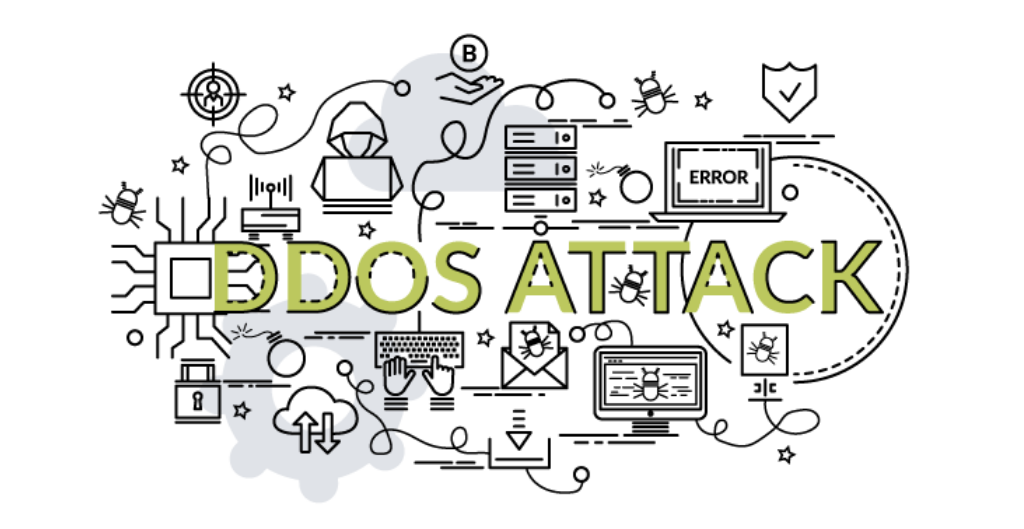
So what exactly is a DDOS attack?
Denial of service and the zombie network
Web servers and network resources have a maximum capacity and can only handle a predefined number of requests. When the limit is exceeded, the site becomes unstable and is often inaccessible. Furthermore, the server has a bandwidth which is the channel connecting the servers to the Internet. This bandwidth also has its limits and it can be overloaded.
To block some or all access to the server, hackers saturate the network by sending hundreds of thousands of requests. They usually use the botnet or zombie network. This is a network of virus-infected computers that are connected to the Internet. The botnet allows hackers to take control of part or all of the network. To create a zombie and add it to a botnet, hackers can use two methods.
The first is the drive-by download, where the user ends up with a malicious program on their PC after visiting an infected site or downloading a rogue application. The second is through an infected link or attachment. In addition to DDOS attacks, the zombie network is used for other malicious purposes such as brute forcing attacks, sending spam, viruses and also to carry out bank fraud operations. To solve the problem, hackers can demand a substantial amount of money from their targets.
Why wage a DDOS attack on a website?
There are several reasons for hackers to launch a DDOS attack on your website.

Competition-related DDOS attack
To optimize the conversion rate and triple the traffic, companies launch several campaigns such as content creation, SEO, shortening the purchase tunnel, or integrating customer reviews. But they can also take things a step further. To outdo their competitors, some take drastic measures by setting up and hiring a specialist to launch a DDOS attack. Until the site is up and running again, the competitor uses the company’s name to run ads. It then takes over and the target will eventually lose its ranking in the search engines.
DDOS attacks on certain content types
Most whistleblower sites and those dealing with controversial topics often suffer DDOS attacks. These are launched by people who do not share the same opinion. After the attack, the content becomes inaccessible and users are prevented from accessing other content. This attack leads to a more or less significant loss of revenue, especially if the problem persists for several days.
DDOS attacks to disrupt the political process
Denial of service — what are the impacts on the website?
The impacts of a DDOS attack vary depending on its nature:
- a site shutdown that will negatively impact the site’s reputation and search engine ranking,
- regular DDOS attacks that could cause major problems with the hosting provider,
- a site that becomes more vulnerable to hacking, because after the attack, most people focus on getting the site back online rather than on improving its security,
- a loss of time and money related to repairing the site after the attack,
- a downturn in the revenue and commercial performance of the site.
Strategies to put in place to protect your site against DDOS attacks

Making the right choice of hosting providers
Cheap hosting is considered to be the primary culprit in making a site vulnerable to DDOS attacks. To protect yourself from different types of cyber attacks, you need to choose a hosting provider that offers several features to reduce the risks and counter the different forms of attack. By putting your trust in InternetVista, you will have the certainty that your site is placed under high surveillance, 24 hours a day, 7 days a week.
Leveraging intuitive solutions to distribute data
You can also protect your site against DDOS attacks by bringing in companies that offer a content distribution network and Internet security services. This solution is based on decentralization and is intended for high traffic and sensitive sites. It will distribute the data over several servers to allow permanent access. You also have GeoIP blocking, which is very effective in detecting any DDOS attacks and blocking the flows coming from a country or a region where the attack originated.
The mirror site to protect against DDOS attacks
The mirror site is the exact copy of your Internet site, but on another domain. Setting up a mirror site helps to prevent DDOS attacks. However, this must be done before the attack. It is also possible to set up a lighter version of the site, to relieve the bandwidth. This lighter structure may not be as aesthetically pleasing, but it also helps to protect against cyber attacks.
Install automatic warning systems
Setting up an alert system is one of the best strategies to prevent a DDOS attack. However, this solution requires a good knowledge of the network. In this case, the Internetvista.com team is there to help you. This platform offers a 100% automated website monitoring service. InternetVista provides you with familiar tools to monitor your performance and detect the slightest problems in time. Typically, in the case of DDOS, internetVista can detect very quickly slowness or even total blocking. A simple free test will allow you to see directly what exactly internetVista can offer you.
